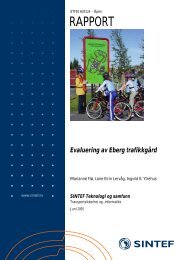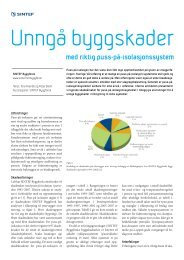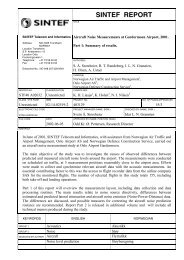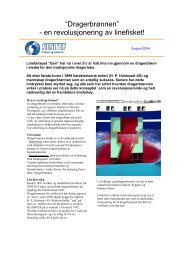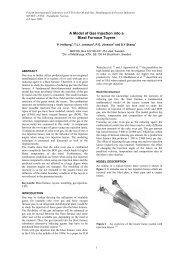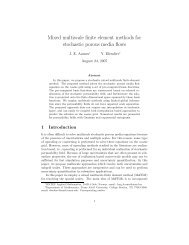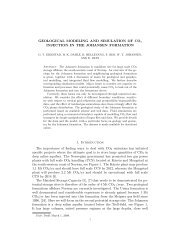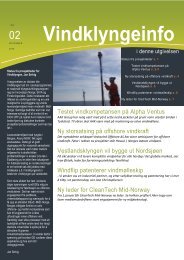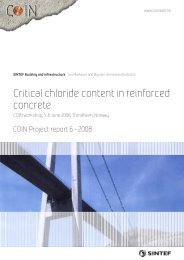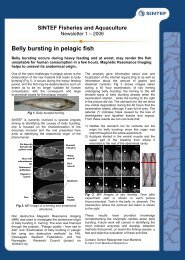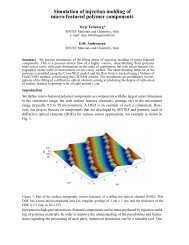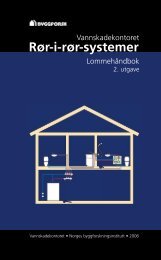Real-Time GPU Silhouette Refinement using adaptively blended ...
Real-Time GPU Silhouette Refinement using adaptively blended ...
Real-Time GPU Silhouette Refinement using adaptively blended ...
Create successful ePaper yourself
Turn your PDF publications into a flip-book with our unique Google optimized e-Paper software.
values of one render target.For dynamic meshes we extract data for both the selectedtriangles and edges. The data for a triangle containsthe vertex positions and shading normals of the cornersof the triangle. Using polar coordinates for normalvectors, this fit into four RGBA render targets. The edgedata is the edge index, its silhouetteness and the two innerBézier control points of that edge, all of which fits intotwo RGBA render targets.6.3 Rendering unrefined trianglesWhile the histopyramid construction step finishes, we issuethe rendering of the unrefined geometry <strong>using</strong> a VBO(vertex buffer object). We encode the triangle index intothe geometry stream, for example as the w-coordinates ofthe vertices. In the vertex shader, we use the triangle indexto do a texture lookup in the triangle refinement texture inorder to check if the triangle is tagged for refinement. Ifso, we collapse the vertex to [0, 0, 0], such that trianglestagged for refinement are degenerate and hence produceno fragments. This is the same approach as [5] uses todiscard geometry.For static meshes, we pass the geometry directly fromthe VBO to vertex transform, where triangles tagged forrefinement are culled. For dynamic meshes, we replacethe geometry in the VBO with indices and retrieve the geometryfor the current frame <strong>using</strong> texture lookups, beforeculling and applying the vertex transforms.The net effect of this pass is the rendering of the coarsegeometry, with holes where triangles are tagged for refinement.Since this pass is vertex-shader only, it can becombined with any regular fragment shader for lightningand shading.6.4 Rendering refined trianglesWhile the unrefined triangles are rendered, we wait forthe triangle data read back to the host memory to finish.We can then issue the rendering of the refined triangles.The geometry of the refined triangles are tessellations oftriangular cubic Bézier patches as described in Section 4and 5.To allow for high frame-rates, the transfer of geometryto the <strong>GPU</strong>, as well as the evaluation of the surface,must be handled carefully. Transfer of vertex data overthe graphics bus is a major bottleneck when renderinggeometry. Boubekeur et.al. [3] have an efficient strategyfor rendering uniformly sampled patches. The ideais that the parameter positions and triangle strip set-up arethe same for any patch with the same topological refinementlevel. Thus, it is enough to store a small numberof pre-tessellated patches P i with parameter positions I ias VBOs on the <strong>GPU</strong>. The coefficients of each patch areuploaded and the vertex shader is used to evaluate the surfaceat the given parameter positions. We use a similarset-up, extended to our adaptive watertight tessellations.The algorithm is similar for static and dynamic meshes,the only difference is the place from which we read thecoefficients. For static meshes, the coefficients are pregeneratedand read directly from host memory. The coefficientsfor a dynamic mesh are obtained from the edgeand triangle read-back pixel pack buffers. Note that thispass is vertex-shader only and we can therefore use thesame fragment shader as for the rendering of the unrefinedtriangles.The tessellation strategy described in Section 5 requiresthe evaluation of (11) at the vertices of the tessellationP m of the parameter domain of F, i.e. at the dyadic parameterpoints (6) at refinement level m. Since the maximalrefinement level M over all patches is usually quitesmall, we can save computations by pre-evaluating the basisfunctions at these points and store these values in atexture.A texture lookup gives four channels of data, and sincea cubic Bézier patch has ten basis functions, we needthree texture lookups to get the values of all of them ata point. If we define the center control point b 111 to bethe average of six other control points, as in (5), we caneliminate it by distributing the associated basis functionB 111 = uvw/6 = µ/6 among the six corresponding basisfunctions,DraftDraftˆB 3 300 = u 3 , ˆB3 201 = 3wu 2 +µ, ˆB3 102 = 3uw 2 +µ,ˆB 3 030 = v 3 , ˆB3 120 = 3uv 2 +µ, ˆB3 210 = 3vu 2 +µ,ˆB 3 003 = w 3 , ˆB3 012 = 3vw 2 +µ, ˆB3 021 = 3wv 2 +µ.(12)We thus obtain a simplified expressionF = ∑ b ijk B ijk =∑(i,j,k)≠(1,1,1)b ijk ˆBijk (13)8



